Why you can trust Tom's Hardware
To read about our monitor tests in-depth, please check out Display Testing Explained: How We Test PC Monitors. We cover brightness and contrast testing on page two.
Uncalibrated – Maximum Backlight Level
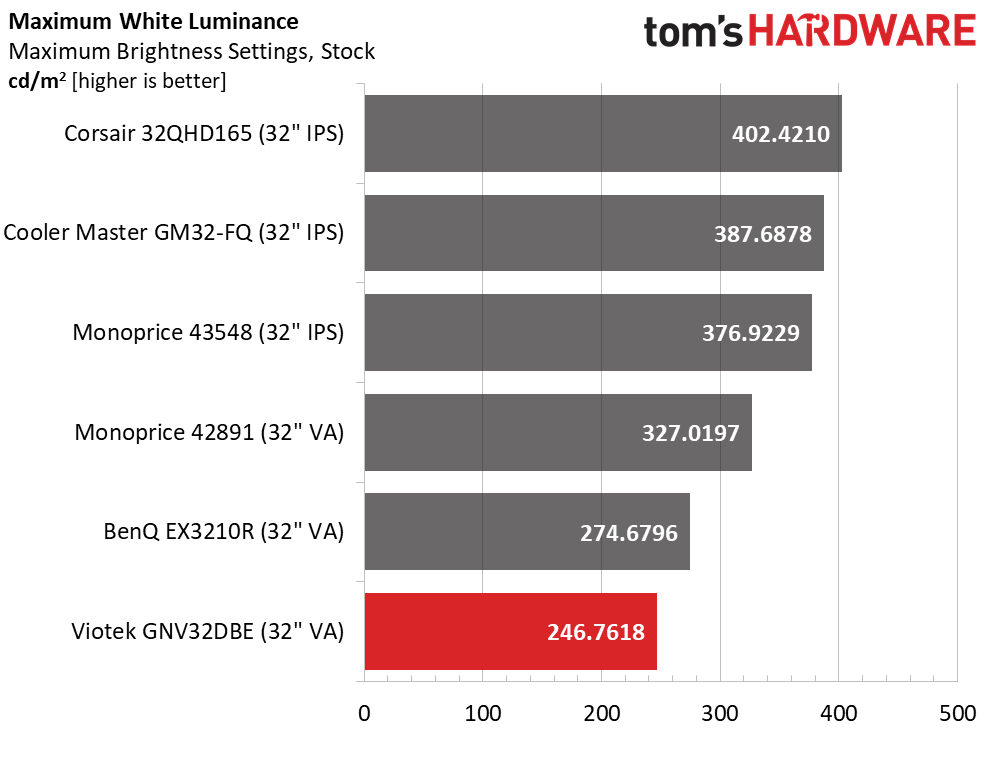
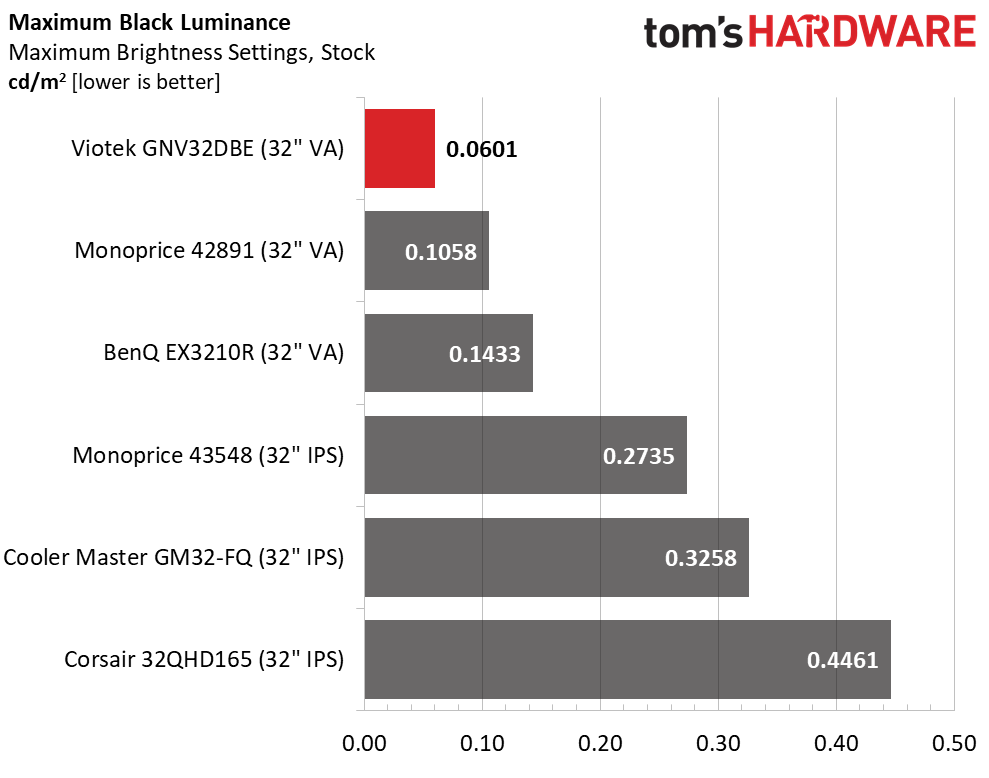
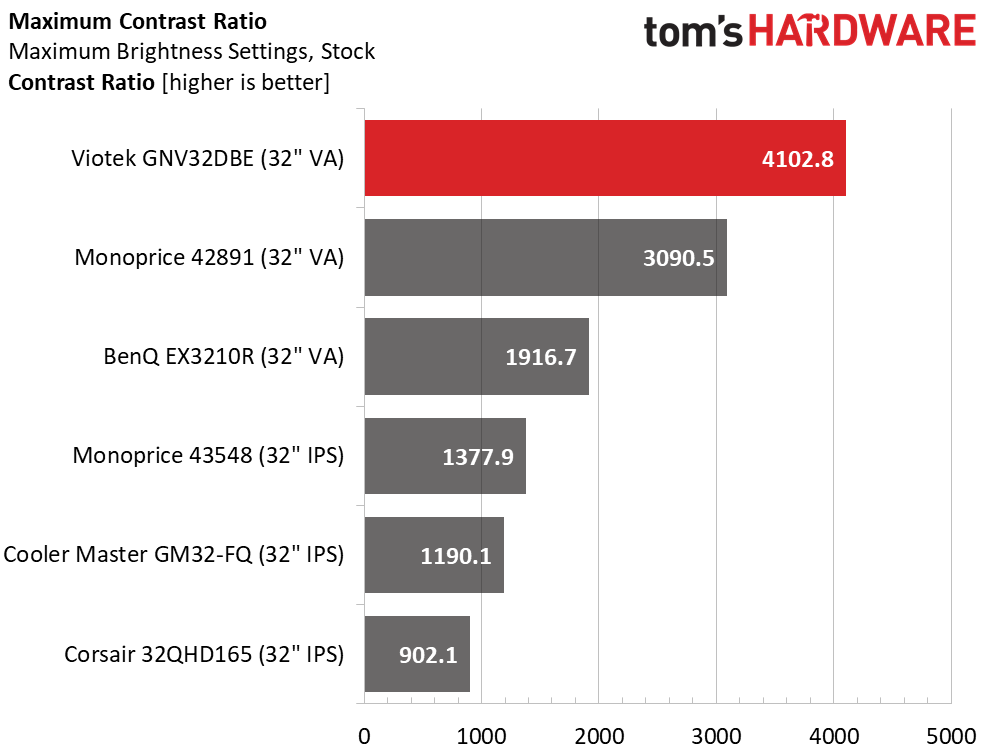
The GNV32DBE falls into the “not that bright, but bright enough” category. 246 nits isn’t impressive but is enough for any indoor environment. My office has a sunlit window, and I had no problems. Larger screens can get away with lower output levels. The downside is that there is no extra overhead for the backlight strobe or for HDR content.
However, black levels and contrast are quite impressive. While VA always beats IPS in this test, the GNV32DBE excels as one of the highest contrast screens I’ve tested. This is a difference you can easily see in a side-by-side comparison.
After Calibration to 200 nits
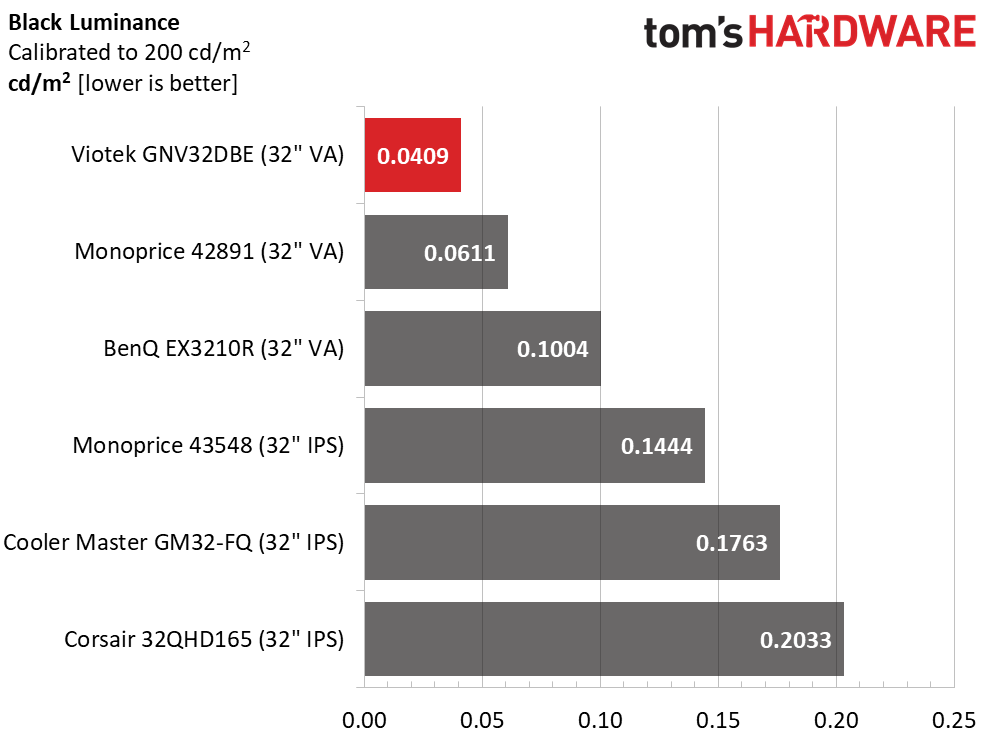
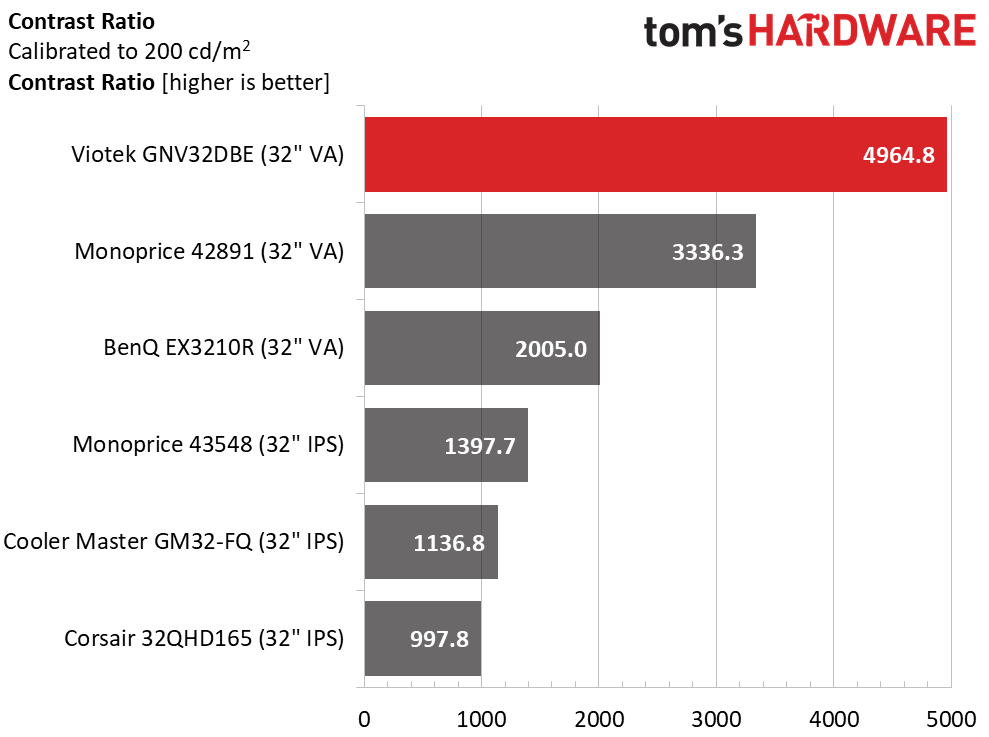
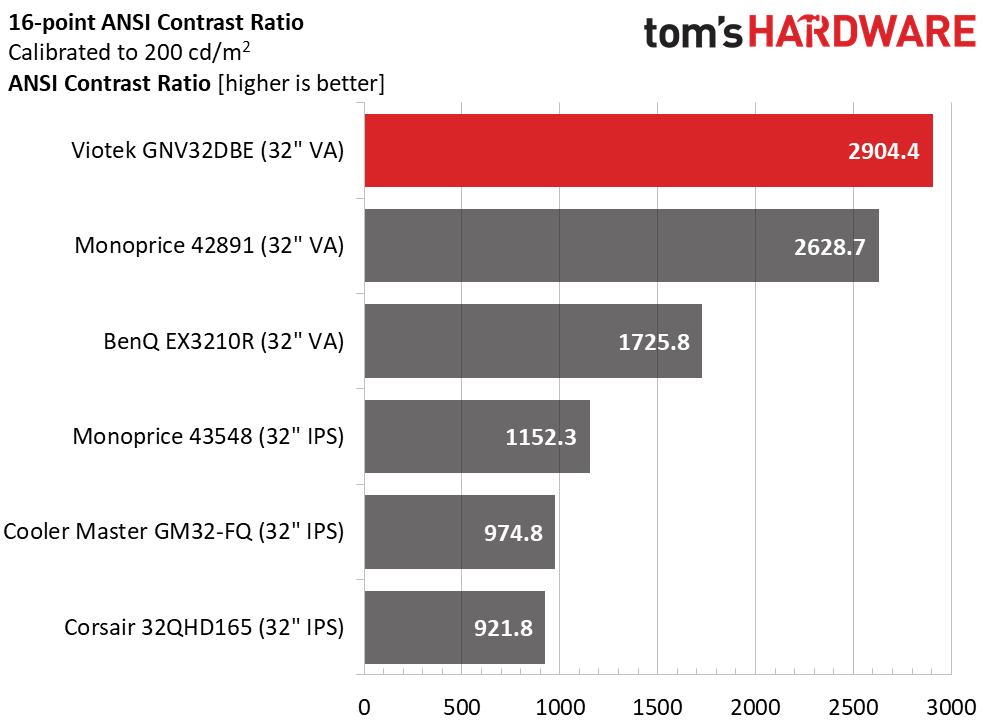
Since my calibration consisted only of turning down the brightness slider to 200 nits, the GNV32DBE is still in first place. It beats the other two VA screens and leaves the IPS panels in the dust. You can increase the contrast ratio even further, to around 10,000:1, using the DCR feature, but then some black detail is obscured.
I was surprised to see the ANSI score come in much lower than the static result. It’s still the best monitor in dynamic range, but when I measured the checkerboard pattern, the white squares were about 15% dimmer than the 200-nit output level I had set. This isn’t a major issue, and the picture still looks fantastic. But it is an unusual response.
Get Tom's Hardware's best news and in-depth reviews, straight to your inbox.
Current page: Brightness and Contrast
Prev Page Response, Input Lag, Viewing Angles and Uniformity Next Page Grayscale, Gamma and Color
Christian Eberle is a Contributing Editor for Tom's Hardware US. He's a veteran reviewer of A/V equipment, specializing in monitors. Christian began his obsession with tech when he built his first PC in 1991, a 286 running DOS 3.0 at a blazing 12MHz. In 2006, he undertook training from the Imaging Science Foundation in video calibration and testing and thus started a passion for precise imaging that persists to this day. He is also a professional musician with a degree from the New England Conservatory as a classical bassoonist which he used to good effect as a performer with the West Point Army Band from 1987 to 2013. He enjoys watching movies and listening to high-end audio in his custom-built home theater and can be seen riding trails near his home on a race-ready ICE VTX recumbent trike. Christian enjoys the endless summer in Florida where he lives with his wife and Chihuahua and plays with orchestras around the state.